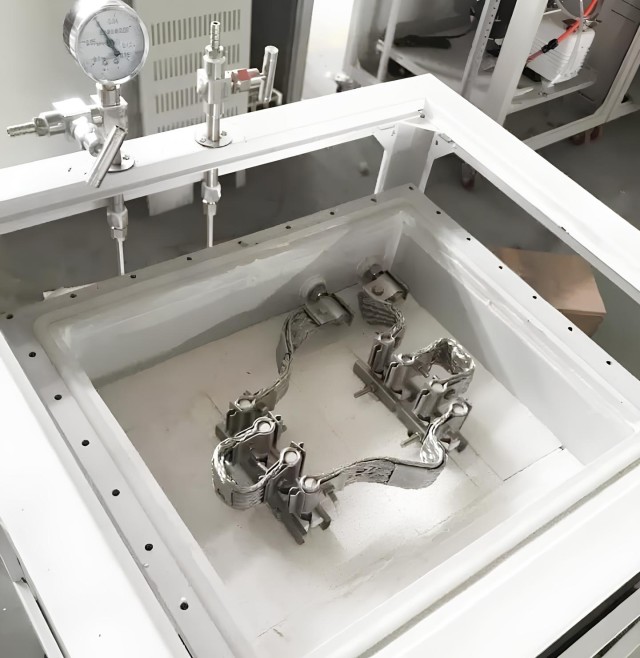Introduction to Controlled Atmosphere Furnaces
Controlled atmosphere furnaces represent a pivotal advancement in heat treatment processes, enabling precise control over environmental conditions to prevent oxidation and other detrimental reactions. These sophisticated systems are crucial in industries ranging from metal fabrication to ceramics, ensuring the integrity and quality of materials. This comprehensive guide delves into the fundamental principles of controlled atmosphere furnaces, exploring their key components, operational techniques, and the diverse gases used to create optimal processing environments. By understanding these elements, industries can harness the full potential of these advanced furnaces, leading to enhanced product quality and process efficiency.
Key Components of Controlled Atmosphere Furnaces
Controlled atmosphere furnaces are essential tools in various industrial processes, particularly in heat treatment where precise control over the environment is critical. These furnaces are designed to maintain specific atmospheric conditions within the heating chamber, which is crucial for preventing oxidation, decarburization, and other unwanted chemical reactions. The key components of a controlled atmosphere furnace include the furnace chamber, gas mixing chambers, and piping systems, each playing a vital role in achieving and maintaining the desired atmosphere.
Furnace Chamber
The furnace chamber is the core component where materials undergo heat treatment. It is typically constructed from high-temperature-resistant materials such as high-alumina ceramics or refractory metals to withstand extreme temperatures and thermal shocks. The design of the chamber ensures uniform heat distribution and minimizes temperature gradients, which is essential for consistent treatment outcomes. The chamber is also sealed to prevent any external air from entering, which could compromise the controlled atmosphere.
Gas Mixing Chambers
Gas mixing chambers are integral to the creation of the specific gas mixtures required for different heat treatment processes. These chambers are equipped with precision flow meters and regulators that control the proportion of each gas entering the mixture. Common gases used in these chambers include nitrogen, hydrogen, argon, and sometimes carbon monoxide or methane, depending on the specific treatment requirements. The gas mixing chambers ensure that the correct gas composition is maintained throughout the process, which is critical for achieving the desired metallurgical properties in the treated materials.
Piping Systems
The piping systems in a controlled atmosphere furnace are responsible for transporting the mixed gases from the gas mixing chambers to the furnace chamber. These systems are typically made from materials that are resistant to corrosion and high temperatures, such as stainless steel or Inconel. The piping is designed to ensure a leak-proof connection between the gas supply and the furnace chamber, preventing any contamination of the controlled atmosphere. Additionally, the piping systems include safety mechanisms such as pressure relief valves and flow control valves to maintain the integrity and safety of the system.
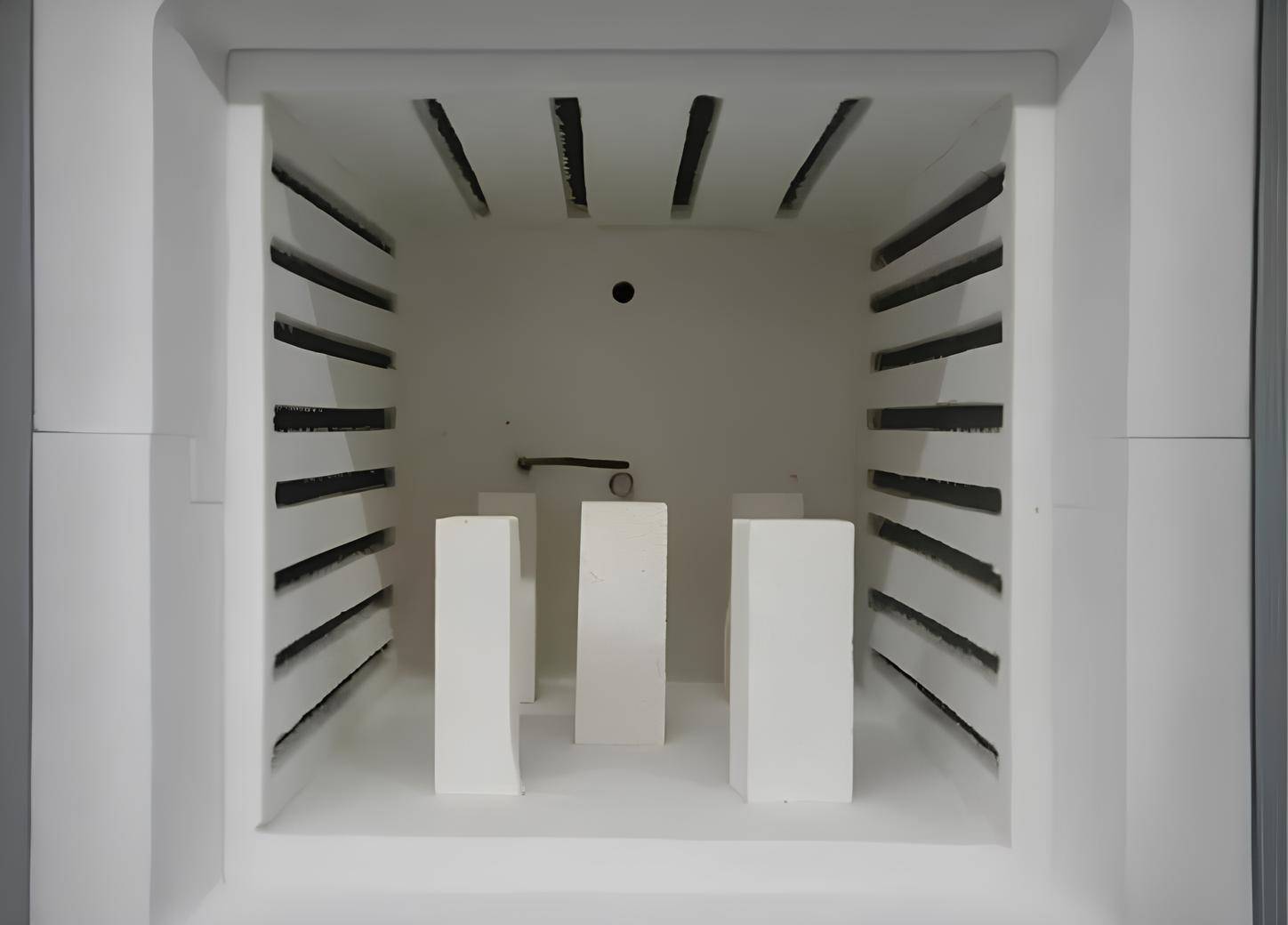
Atmosphere Control System
The atmosphere control system is a sophisticated component that monitors and adjusts the gas composition and flow rates within the furnace chamber. This system uses sensors and controllers to continuously monitor the atmosphere, ensuring that it remains consistent with the predefined parameters. It can automatically adjust the gas flow rates and mixtures in response to changes in temperature or pressure, ensuring that the desired atmosphere is maintained throughout the heat treatment process. This level of control is essential for achieving repeatable and reliable results in material processing.
Applications of Controlled Atmosphere Furnaces
Controlled atmosphere furnaces are used in a wide range of applications across various industries. They are particularly important in metallurgical processes where the prevention of oxidation and decarburization is critical. Examples include the heat treatment of steel components to improve hardness and wear resistance, the sintering of powdered metals, and the annealing of copper and aluminum alloys to enhance their ductility and electrical conductivity. These furnaces are also used in the production of electronic components, where the prevention of oxidation is essential for maintaining the integrity of the devices.
In conclusion, the key components of controlled atmosphere furnaces—the furnace chamber, gas mixing chambers, piping systems, and atmosphere control system—work in concert to create and maintain a precise and controlled environment for heat treatment. This level of control is essential for achieving the desired metallurgical properties in treated materials and is crucial for the success of various industrial processes.
Types of Gases Used in Controlled Atmosphere Furnaces
Controlled atmosphere furnaces utilize various gases to create specific environments that enhance the heat treatment process. These gases play a crucial role in preventing oxidation, decarburization, and other unwanted chemical reactions that can affect the quality and properties of materials. The primary gases used include nitrogen, argon, hydrogen, and helium, each with unique benefits and applications.
Nitrogen
Nitrogen is the most commonly used gas in controlled atmosphere furnaces. It is an inert, unreactive gas that provides a protective environment by preventing oxidation and other chemical reactions. Nitrogen is particularly effective in applications such as annealing, brazing, and sintering, where maintaining the integrity of the material is essential. It is also cost-effective and readily available, making it a popular choice in many industrial settings.
Argon
Argon is another inert gas used in controlled atmosphere furnaces. It is heavier than air and provides an excellent barrier against oxidation. Argon is often used in applications where higher purity levels are required, such as in the heat treatment of stainless steel and other high-alloy materials. Its inert nature ensures that the material remains free from contaminants, resulting in superior quality and performance.
Hydrogen
Hydrogen is a reactive gas that is used in controlled atmosphere furnaces for its ability to reduce oxides and promote decarburization. It is commonly used in processes such as carburizing and annealing, where the removal of surface oxides is necessary. However, hydrogen must be handled with care due to its flammability and potential for explosive mixtures with air. Proper safety measures and equipment are essential when using hydrogen in heat treatment processes.
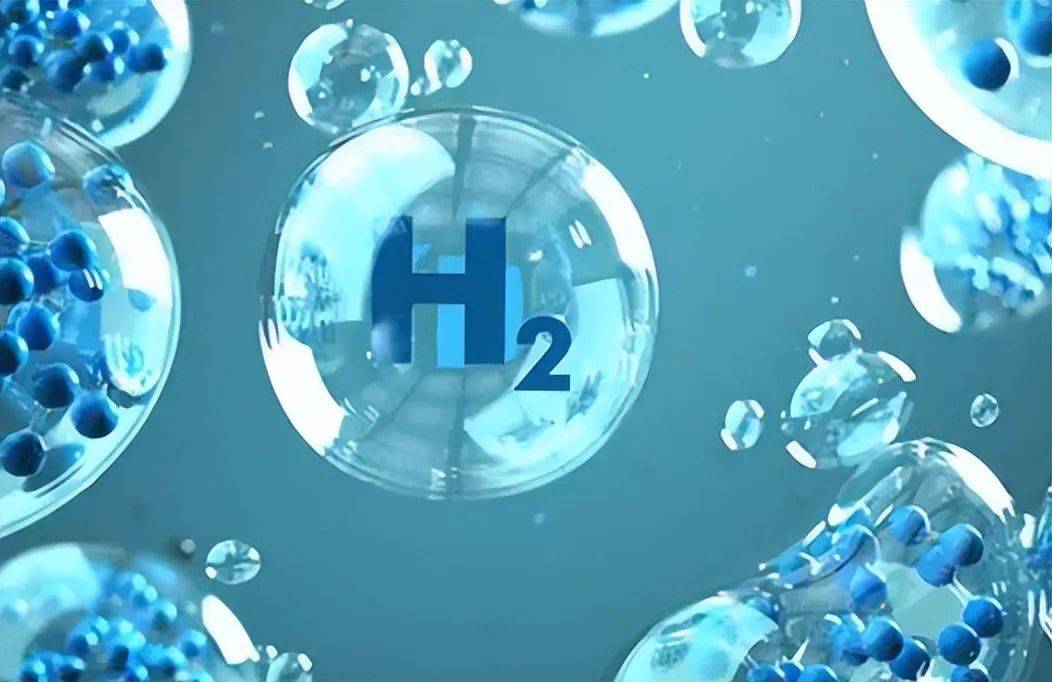
Helium
Helium is an inert gas that is less commonly used due to its higher cost compared to nitrogen and argon. However, it has unique properties that make it suitable for specific applications. Helium has a high thermal conductivity, which allows for faster heating and cooling rates. This makes it ideal for processes that require rapid thermal cycling, such as in the heat treatment of aerospace components and other high-performance materials.
Applications and Benefits
Each gas type has specific applications and benefits in various heat treatment processes. Nitrogen is widely used for its cost-effectiveness and versatility, while argon provides higher purity and protection against oxidation. Hydrogen is essential for reducing oxides and promoting decarburization, and helium offers rapid thermal cycling capabilities. By selecting the appropriate gas for a specific application, manufacturers can achieve the desired material properties and ensure the quality and performance of their products.
In conclusion, the choice of gas in controlled atmosphere furnaces is critical to the success of heat treatment processes. Nitrogen, argon, hydrogen, and helium each offer unique advantages and are selected based on the specific requirements of the application. Understanding the properties and benefits of these gases allows for optimal process control and ensures the production of high-quality materials in various industries.
Operational Techniques for Controlled Atmosphere Furnaces
Controlled atmosphere furnaces are essential tools in various heat treatment processes, ensuring precise temperature control and minimal oxidation or decarburization of metal parts. These furnaces provide an optimal environment by carefully controlling the composition and flow of gases within the furnace, leading to improved product quality, consistency, and increased production efficiency. Here, we delve into the operational techniques, safety measures, gas mixing procedures, and temperature control techniques required for effective use of controlled atmosphere furnaces.
Safety Measures
Operating a controlled atmosphere furnace involves handling potentially hazardous gases and high temperatures. Safety is paramount and includes:
- Personal Protective Equipment (PPE): Operators must wear appropriate PPE, including heat-resistant gloves, safety glasses, and flame-resistant clothing.
- Emergency Procedures: Clear and concise emergency procedures should be in place, including how to handle gas leaks, electrical malfunctions, and fire hazards.
- Regular Maintenance: The furnace and its components should be regularly inspected and maintained to prevent accidents and ensure optimal performance.
Gas Mixing Procedures
The atmosphere within the furnace is crucial for preventing oxidation and decarburization. Commonly used inert gases include argon (Ar), helium (He), and nitrogen (N₂). The gas mixture depends on the specific heat treatment process, whether it's annealing, neutral quenching, tempering, nitriding, sintering, or brazing.
- Gas Purity: Ensure the gases are of high purity to prevent contamination of the metal parts.
- Gas Mixture Control: Use precise measuring instruments to mix the gases accurately. This can be done in a separate chamber before introducing the mixture into the furnace.
- Gas Flow Control: Monitor and control the flow of gases into the furnace to maintain the desired atmosphere. This involves using pressure regulators and flow meters.
Temperature Control Techniques
Temperature control is critical for achieving consistent product quality. Techniques include:
- Thermocouples and Temperature Sensors: Use multiple thermocouples and temperature sensors placed strategically within the furnace to monitor temperature distribution.
- PID Controllers: Implement Proportional-Integral-Derivative (PID) controllers to maintain precise temperature control. These controllers adjust the heating elements based on feedback from the temperature sensors.
- Temperature Profiling: Create and follow specific temperature profiles for different heat treatment processes. This involves ramping up and down the temperature at controlled rates to achieve the desired metallurgical transformations.
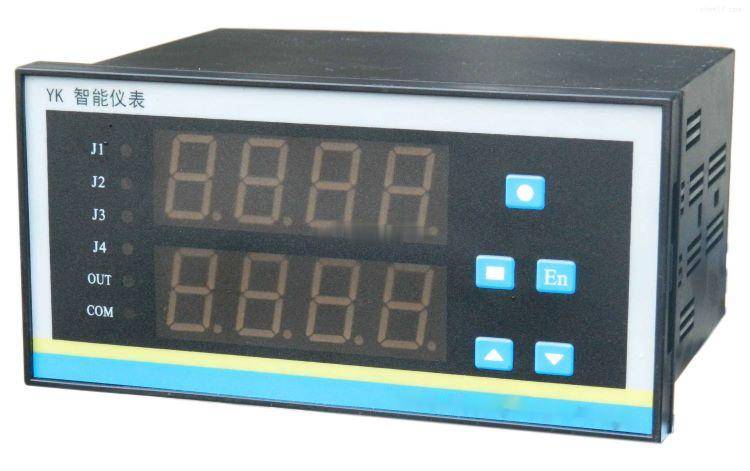
Monitoring and Control Parameters
To ensure efficient heat treatment, several parameters must be carefully monitored and controlled:
- Furnace Atmosphere: Continuously monitor and adjust the gas composition to maintain the required atmosphere.
- Temperature: Closely monitor and control the temperature within the furnace to ensure consistent product quality.
- Humidity: Control humidity to avoid oxidation or decarburization of metal parts.
- Pressure: Monitor and control the pressure within the furnace to prevent excessive gas flow and ensure a stable atmosphere.
Conclusion
Controlled atmosphere furnaces are indispensable in heat treatment processes, offering precise control over the environment to enhance product quality and production efficiency. By adhering to safety measures, implementing accurate gas mixing procedures, and employing advanced temperature control techniques, operators can achieve optimal results. Regular maintenance and monitoring are crucial to prevent accidents and ensure the longevity and effectiveness of the furnace.
Applications of Controlled Atmosphere Furnaces
Controlled atmosphere furnaces are indispensable tools in numerous industries and processes, offering precise control over atmospheric conditions to enhance material properties and achieve desired outcomes. These furnaces are particularly renowned for their applications in metal fabrication, ceramics, and research laboratories, among others. Below, we explore specific industries where controlled atmosphere furnaces play a critical role and discuss notable case studies that underscore their effectiveness and success.
Metal Fabrication
In the realm of metal fabrication, controlled atmosphere furnaces are pivotal for various heat treatment processes such as annealing, tempering, and hardening. These processes are essential for refining the mechanical properties of metals, including their strength, ductility, and hardness. For instance, in the automotive industry, controlled atmosphere furnaces are used to heat treat steel components, enhancing their durability and resistance to wear and tear. This not only improves the performance of vehicles but also extends their lifespan, reducing maintenance costs and environmental impact.
Ceramics Industry
The ceramics industry also benefits significantly from the use of controlled atmosphere furnaces. These furnaces are crucial for processes like sintering, where ceramic powders are heated to form a solid mass with enhanced mechanical strength and durability. A notable application is in the production of advanced ceramics used in aerospace and electronics, where high-temperature stability and resistance to corrosion are paramount. For example, the use of controlled atmosphere furnaces in the production of ceramic insulators for high-voltage applications ensures reliability and safety in electrical systems.
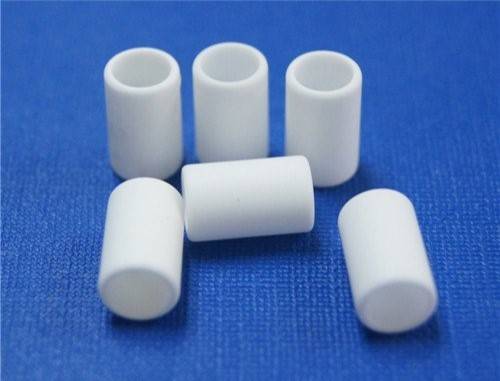
Research Laboratories
In research laboratories, controlled atmosphere furnaces are essential for conducting experiments that require precise control over atmospheric conditions. These furnaces are used in materials science research to study the effects of different atmospheres on material properties, such as oxidation resistance and phase transformations. A specific case study involves the development of new alloys for aerospace applications, where controlled atmosphere furnaces are used to simulate high-altitude conditions and test the performance of materials under extreme environments.
Electronics Manufacturing
The electronics industry relies heavily on controlled atmosphere furnaces for the production of semiconductor devices. These furnaces are used in processes such as diffusion and annealing, which are critical for creating electronic components with specific electrical properties. For instance, in the manufacture of silicon wafers for integrated circuits, controlled atmosphere furnaces ensure uniform diffusion of dopants, leading to consistent and reliable electronic devices. This precision is crucial for the performance and miniaturization of electronic components in modern devices.
Glass Manufacturing
In the glass industry, controlled atmosphere furnaces are employed for tempering and annealing processes that enhance the strength and thermal stability of glass products. These furnaces create a controlled environment that allows for precise temperature control, resulting in glass with improved resistance to thermal shock and mechanical stress. This application is particularly important in the production of safety glass for automotive and architectural applications, where durability and safety are critical.
In conclusion, controlled atmosphere furnaces are versatile and essential tools across various industries, enabling precise control over atmospheric conditions to enhance material properties and achieve desired outcomes. Their applications in metal fabrication, ceramics, research laboratories, electronics manufacturing, and glass production highlight their significant impact on product quality, performance, and innovation. As industries continue to evolve, the role of controlled atmosphere furnaces will undoubtedly expand, driving advancements in materials science and manufacturing processes.
Benefits of Using Controlled Atmosphere Furnaces
Controlled atmosphere furnaces have revolutionized the field of heat treatment, offering significant advantages over traditional heating methods. These advanced furnaces provide a meticulously controlled environment that enhances product quality, reduces material waste, and boosts process efficiency. Here, we delve into the key benefits of using controlled atmosphere furnaces.
Improved Product Quality
One of the primary advantages of controlled atmosphere furnaces is the enhancement in product quality. By precisely controlling the temperature and atmosphere within the furnace, these systems minimize the risk of oxidation and decarburization, which are common issues in traditional heating methods. Oxidation can lead to surface imperfections and reduced mechanical properties, while decarburization can alter the chemical composition of the material, affecting its hardness and durability. Controlled atmosphere furnaces use protective gases such as nitrogen, hydrogen, and endothermic gas mixtures to create an inert environment that prevents these issues, ensuring that the final product meets stringent quality standards.
Reduced Material Waste
Material waste is a significant concern in many manufacturing processes, particularly in industries where high-value materials are used. Controlled atmosphere furnaces help reduce waste by providing a more efficient and precise heating process. The ability to maintain a consistent temperature and atmosphere reduces the likelihood of thermal distortion and other defects that can occur during heat treatment. Additionally, the use of protective gases prevents surface contamination, which can lead to the rejection of parts. By minimizing these issues, controlled atmosphere furnaces contribute to a more sustainable manufacturing process, reducing both material costs and environmental impact.
Enhanced Process Efficiency
Efficiency is a critical factor in any manufacturing process, and controlled atmosphere furnaces excel in this regard. These furnaces are designed to operate with high throughput and minimal downtime, thanks to their advanced control systems and robust construction. The ability to quickly ramp up and stabilize temperatures, coupled with the continuous monitoring of process parameters, ensures that production cycles are optimized. Furthermore, the use of continuous furnaces, where parts move through the furnace in a stream, allows for high-volume production of similar parts without the need for manual handling between batches. This not only increases productivity but also reduces labor costs and the potential for human error.

Improved Environmental Conditions
Traditional heating methods, such as salt bath and pack carburizing furnaces, often pose significant environmental challenges. These methods can lead to land contamination from toxic salts (cyanides) and the disposal of waste salts, contaminated jigs, and fixtures. Controlled atmosphere furnaces, on the other hand, offer much improved environmental conditions of operation. They eliminate the need for hazardous materials and reduce the risk of environmental contamination. Additionally, the use of vacuum pumping systems to remove byproducts during the heating process results in a higher purity end product, further contributing to environmental sustainability.
Versatility and Customization
Controlled atmosphere furnaces are highly versatile and can be customized to meet the specific needs of various applications. They fall into two major categories: batch type furnaces and continuous furnaces. Batch type furnaces are ideal for small to medium-sized workloads, where the parts are charged and discharged as a single unit. Continuous furnaces, favored for high-volume production, allow parts to enter and leave the furnace in a continuous stream. This flexibility enables manufacturers to choose the most suitable furnace type based on their production requirements, ensuring optimal performance and efficiency.
Advanced Control and Monitoring
The advanced control systems integrated into controlled atmosphere furnaces play a crucial role in their performance. These systems allow for precise monitoring and adjustment of critical parameters such as temperature, gas composition, and flow rates. Computer-controlled processes ensure repeatability and consistency, which are essential for maintaining high-quality standards across multiple production runs. Rapid cooling (quenching) capabilities further enhance process efficiency by shortening cycle times, while low contamination levels ensure that the final product is free from impurities.
In conclusion, controlled atmosphere furnaces offer a multitude of benefits that make them the preferred choice for modern heat treatment processes. By providing an optimal environment for metal components, these furnaces enhance product quality, reduce material waste, and increase process efficiency. The improved environmental conditions, versatility, and advanced control systems further contribute to their widespread adoption in various industries. As technology continues to advance, controlled atmosphere furnaces are poised to play an even more significant role in the future of heat treatment and manufacturing.
Maintenance and Troubleshooting for Controlled Atmosphere Furnaces
Controlled atmosphere furnaces are essential tools in various industrial processes, including heat treatment, annealing, and brazing. To ensure their longevity and optimal performance, regular maintenance and timely troubleshooting of common issues are crucial. This section provides comprehensive guidelines on maintaining and troubleshooting controlled atmosphere furnaces, focusing on regular inspections, component replacement, and handling operational problems.
Routine Maintenance
-
Initial Use and Periodic Baking: When a muffle furnace is used for the first time or after a long period of disuse, it must be baked. The recommended baking time is four hours at temperatures ranging from 200°C to 600°C. During regular use, the furnace temperature should not exceed the rated temperature to prevent damage to the electric heating elements. It is advisable to operate the furnace below 50°C below its maximum temperature to extend the life of the wiring.
-
Environmental Conditions: The furnace and its controller should be located in an environment with a relative humidity not exceeding 85%. The workspace should be free from conductive dust, explosive or corrosive gases. Materials that release volatile gases when heated, such as those coated with grease or other metallic substances, can corrode the electric heating elements. Therefore, precautions should be taken to prevent such materials from being heated directly and to ensure proper sealing of containers.
-
Temperature Controller Environment: The temperature controller should be used within an ambient temperature range of 0-40°C.
-
Thermocouple Maintenance: Regular inspections should include checking the connections between the furnace and the temperature controller. Thermocouples can interfere with the controller, causing fluctuations in the displayed temperature and increased measurement errors. To mitigate this, ensure that the thermocouple's metal protection tube is properly grounded. In some cases, using a three-wire output thermocouple may be necessary.
-
Furnace Chamber Cleaning: Maintain the cleanliness of the furnace chamber by regularly removing oxides and other residues. This is particularly important when using alkaline substances for melting specimens or cauterizing sediments. It is advisable to pre-pave the bottom of the furnace with a layer of refractory material to protect it from potential damage.

Preventative Maintenance Schedule
-
Monthly Inspections: Inspect the interior of the furnace for any signs of cracking, sagging, or pin failures. Replace any damaged pins and contact the manufacturer if significant sagging or cracks are observed.
-
Annual Maintenance: Replace the thermocouples annually, as they can degrade over time and lead to inaccurate temperature readings. If water-cooled tube end caps are used, replace the silicone and viton seals. Similarly, replace the seals on air-cooled load platforms for bottom-loading vertical tube furnaces.
-
Every 3-5 Years: Inspect the furnace insulation for deterioration, especially if it becomes difficult to reach setpoint temperatures. Check and replace high-temperature insulation tube plugs if necessary. Heating elements should be replaced only when they fail, and it is possible to replace individual elements rather than the entire set. Additionally, inspect and replace bus bars, element holders, and straps as needed to prevent arcing and element loss.
Troubleshooting Common Issues
-
Leak Detection: Visual inspection is crucial for identifying leaks in atmosphere furnaces. Routine preventative maintenance is essential for maintaining safety and efficiency. Leaks can adversely affect the surface of the materials being processed, especially during high-temperature operations.
-
Door Seals and Packing Glands: Daily inspections of door seals should be conducted, and any leaks should be promptly repaired. Weekly lubrication of packing glands is critical, and yearly replacement is recommended.
-
Refractory Maintenance: Immediately replace any missing or damaged refractory materials. Visually inspecting the furnace and performing routine preventative maintenance are critical to maintaining the furnace's integrity.
By adhering to these maintenance and troubleshooting guidelines, operators can ensure the longevity and optimal performance of their controlled atmosphere furnaces. Regular inspections and timely repairs will help maintain part quality and ensure the successful operation of the equipment.
Future Trends in Controlled Atmosphere Furnace Technology
The field of controlled atmosphere furnace technology is poised for significant advancements, driven by innovations in gas control systems, energy efficiency, and automation. These developments are set to revolutionize the way materials are processed and treated, offering enhanced precision, reduced environmental impact, and increased operational efficiency.
Advancements in Gas Control Systems
Modern controlled atmosphere furnaces are increasingly equipped with sophisticated gas control systems that allow for precise manipulation of the internal atmospheric composition. These systems typically include advanced sensors, flow meters, and automated valves that work in tandem to maintain optimal gas mixtures and flow rates. For instance, the integration of digital flow controllers and real-time monitoring systems enables manufacturers to achieve unprecedented levels of consistency and repeatability in their processes.
One emerging trend is the use of machine learning algorithms to optimize gas mixtures and flow rates based on historical data and process requirements. This predictive approach can significantly reduce waste and improve the quality of the final product. According to industry reports, the adoption of such intelligent gas control systems can lead to a reduction in operational costs by up to 20%.

Energy Efficiency Improvements
Energy efficiency remains a critical focus area in the development of controlled atmosphere furnaces. Recent advancements in insulation materials and heating elements have led to more efficient heat transfer and reduced energy consumption. For example, the use of low-mass vacuum-formed ceramic insulation has improved thermodynamic capacities, allowing for faster heating and cooling cycles.
Moreover, the integration of renewable energy sources, such as solar and wind power, into the energy supply for furnaces is gaining traction. This not only reduces the carbon footprint of the manufacturing process but also ensures a more sustainable operation. Studies have shown that the adoption of renewable energy sources can lead to a reduction in greenhouse gas emissions by up to 30%.
Automation and Digitalization
The trend towards automation and digitalization in controlled atmosphere furnaces is accelerating, driven by the need for higher productivity and improved process control. Advanced control systems, such as programmable logic controllers (PLCs) and distributed control systems (DCS), are being integrated into furnace operations to automate various tasks, from gas flow regulation to temperature control.
The use of industrial internet of things (IIoT) technologies is also on the rise, enabling real-time monitoring and remote control of furnace operations. This allows for immediate detection of anomalies and prompt corrective actions, ensuring consistent and reliable processing outcomes. Additionally, the data generated from these systems can be leveraged for predictive maintenance, further enhancing the efficiency and longevity of the equipment.
Customization and Specialization
As industries continue to evolve, the demand for customized and specialized furnaces is increasing. Manufacturers are now offering tailored solutions that cater to specific process requirements, such as temperature uniformity, gas atmospheres, and sample sizes. This customization not only enhances the utility of the furnaces but also ensures optimal performance in intricate processes.
For instance, furnaces designed for high-precision applications in the aerospace and electronics industries often feature advanced gas detection systems and specialized insulation materials. These customizations ensure that the furnaces can meet the stringent quality standards and performance expectations of these industries.
Conclusion
The future of controlled atmosphere furnace technology is bright, with numerous advancements on the horizon. The integration of advanced gas control systems, energy-efficient designs, and automated operations will continue to drive innovation in this field. As manufacturers embrace these trends, they will be better equipped to meet the evolving demands of various industries, ensuring sustainable and efficient material processing for years to come.
Related Products
- 1400℃ Controlled Atmosphere Furnace with Nitrogen and Inert Atmosphere
- 1200℃ Controlled Atmosphere Furnace Nitrogen Inert Atmosphere Furnace
- 1700℃ Controlled Atmosphere Furnace Nitrogen Inert Atmosphere Furnace
- Controlled Nitrogen Inert Hydrogen Atmosphere Furnace
- Mesh belt controlled atmosphere furnace
Related Articles
- Hydrogen Atmosphere Furnaces: Applications, Safety, and Maintenance
- Muffle Furnace: Unraveling the Secrets of Uniform Heating and Controlled Atmosphere
- Why Your Brazed Joints Keep Failing: The Invisible Saboteur in Your Furnace
- How Controlled Atmosphere Furnaces Improve Quality and Consistency in Heat Treatment
- The Benefits of Controlled Atmosphere Furnaces for Sintering and Annealing Processes
